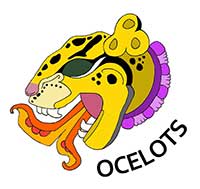Resources
Wildlife Crossings in Costa Rica: Are wildlife crossing structures effective in mitigating roadkill mortality on tropical highways?
Author(s): Mike Mooring1, April Maskiewicz Cordero1, Jack Ewing2
1. Point Loma Nazarene University 2. Hacienda Baru National Wildlife Refuge
467 total view(s), 81 download(s)
- Gala
SLOTH.jpg(JPG)
- License terms
Description
Overview of Module:
In this case study, students are introduced to the effect of roads and highways on native animals, and how roadkill mortality can negatively affect wildlife populations. Students begin reading the story of Jack Ewing, manager of the Hacienda Baru National Wildlife Refuge in Costa Rica, and his passion to minimize roadkills on a new highway located along a critical biological corridor. After learning about types of crossings and predicting animal usage, they examine data on the impacts of the crossings. Roadkill monitoring surveys in the presence of the crossing structures compared with sections without crossings show that the 29 underpasses and overpasses reduced roadkill mortality, while studies using camera-trap surveillance revealed that the crossings were eventually used by 21 mammalian species. These studies represent the first time in Central America that the effectiveness of wildlife crossings was tested to establish whether well-designed structures can contribute to wildlife-friendly roadways.
Learning Objectives:
1. Evaluate the biotic and abiotic costs of highways for wildlife in the tropics, including direct and indirect costs. For example, how might roads change the behavior of animals, and how could this in turn impact population and ecosystem functions?
2. Analyze the effectiveness of various biological corridors in mitigating some of the costs of roadways for wildlife.
3. Assess effective wildlife crossing structures tailored to the attributes of wildlife based on species-typical locomotion, activity, and behavioral flexibility.
4. Reflect on the complexities involved in developing and implementing a wildlife crossing solution in the tropics, including biological, social, and economic factors.
5. Identify ways they can advocate for wildlife crossings in their local community.
Support was provided by: A grant from the United States National Science Foundation (DBI-RCN-UBE 2120141).
Cite this work
Researchers should cite this work as follows:
- Mike Mooring, April Maskiewicz Cordero, Jack Ewing (2023). Wildlife Crossings in Costa Rica: Are wildlife crossing structures effective in mitigating roadkill mortality on tropical highways?. OCELOTS Incubator: Creating an online module in tropical biology, (Version 2.0). QUBES Educational Resources. doi:10.25334/NK85-B873
